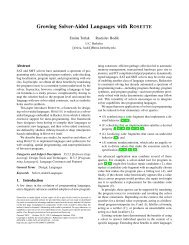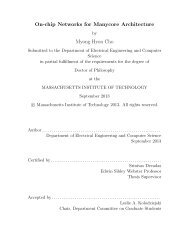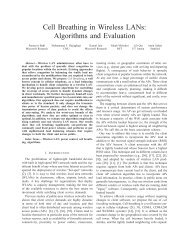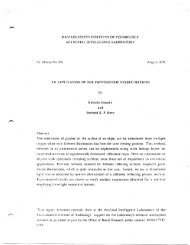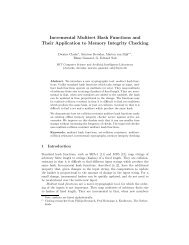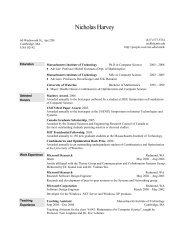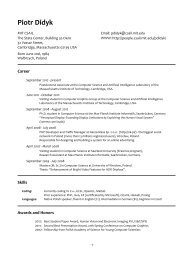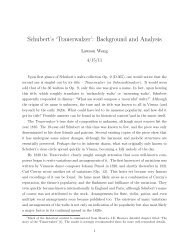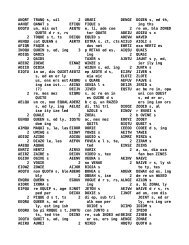Prism User's Guide - CSAIL People - MIT
Prism User's Guide - CSAIL People - MIT
Prism User's Guide - CSAIL People - MIT
Create successful ePaper yourself
Turn your PDF publications into a flip-book with our unique Google optimized e-Paper software.
A1'.<br />
I<br />
44 I<br />
Chapter 5. Vualing Data 79<br />
Redirection of output to a window via the on window syntax works slightly differently<br />
for display and print from the way it works for other commands; see<br />
Section 2.7.3 for a discussion of redirection. Separate windows are created for<br />
each variable or expression that you print or display. Thus, the commands<br />
display on dedicated<br />
display y on dedicated<br />
create two windows, each of which is updated separately.<br />
r- _ . · __ .r C _ _ * _ .· _ ._ r _ _____ sj§ --A<br />
io print or wrsplay me contents or a register, precede me register's name with a<br />
dollar sign. For example,<br />
print $pc<br />
prints the program counter register. See Section 4.6.2 for a complete list of register<br />
names.<br />
Setting the Context<br />
You can precede the print or display command with a where statement that<br />
can make elements of a variable or array inactive. Inactive elements are not<br />
printed in the command window; Section 5.3.4 describes how they are treated in<br />
visualizers. Making elements inactive is referred to as setting the context.<br />
To set the context, follow the where keyword with an expression in parentheses.<br />
The expression must evaluate to true or false for every element of the variable<br />
or array being printed. In CM Fortran, the expression can operate on a conformable<br />
array. In C*, it can operate on a parallel variable of the same shape as the<br />
variable being printed.<br />
For example,<br />
where (i .gt. 0) print i<br />
prints (in the command window) only the values of i that are greater than 0.<br />
In a C* program where pvarl and pvar2 are of the same shape,<br />
where (pvar > 0) display pvar2 on dedicated<br />
displays as active only the elements of pvar2 for which the value of the corresponding<br />
element of pvarl is greater than 0.<br />
You can use certain Fortran intrinsics in the where statement. For example,<br />
Version 1.2, March 1993<br />
Copyright 0 1993 Thinking Machines Corporation



